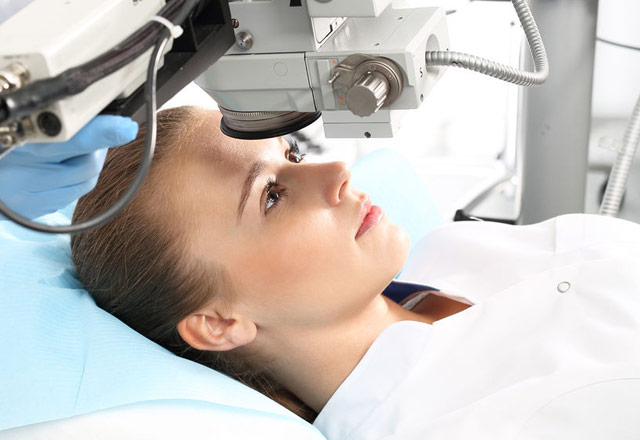Best laser eye surgery options for correcting astigmatism in Bunker Hill and Houston TX Area
Published by Vision Source Westview,
Sick of your glasses? If you suffer from astigmatism, you may be surprised to know that most eyes have it. This simply means that the front of the eye is a little more curved in one contour than the other. It is easily corrected with glasses (and less easily so with contact lenses) but what about laser eye surgery? What are your best options for getting rid of your astigmatism and your glasses?
The condition can be corrected as part of a treatment for short- or long-sightedness, whether that is a corneal procedure (LASIK or SMILE) or a lens replacement procedure.
LASIK and SMILE
If you’re under 50, both LASIK and SMILE provide very accurate correction for mild to moderate incidences of the condition. Higher degrees (above 4 dioptres) can also be corrected, but there may be some residual astigmatism after your procedure. That said, we often correct eyes with a lot of astigmatism and there is no significant residual error after surgery. Both LASIK and SMILE correct up to 10 dioptres of short-sightedness (myopia) including your astigmatism. LASIK also corrects long-sightedness (hyperopia) up to about 4 dioptres. Both procedures use a laser in different ways to change the shape of your cornea. They have been shown to have excellent safety profiles and are very accurate within their range.
What about lens replacement?
If you’re over 50, chances are you wear reading glasses or multifocals. Or you may take off your distance glasses to read. Either way, there is a difference between your correction for distance and near. Laser eye surgery aims to provide the maximum independence from glasses, although it doesn’t guarantee that you won’t need them for some tasks. Although it is possible to have LASIK or SMILE if you are over 50, it is increasingly common to have lens replacement surgery. This is exactly like cataract surgery, only without the cataract. It is corrected as part of this lens replacement procedure, either through corneal incisions or more commonly through the use of a toric intraocular lens (IOL). Toric IOLs are specially shaped to correct it. The trouble with them until fairly recently, was that if they were not precisely placed, they didn’t provide crisp vision. Accurate placement is now much more likely due to the technology used during the surgical work up and the procedure itself. Special iris-recognition tracking systems allow the toric IOL to be placed in precisely the right position to correct the condition and free you from dependence on glasses.
How do I give myself the best chance of success with correcting it?
Choosing a reputable surgeon greatly enhances your chances of success. There is no substitute for experience. Someone who is also a corneal specialist will also mean that should any complications arise, as they sometimes do, they can be managed with confidence. The right technology plays a big role where in comes to correcting the condition. Ask your surgeon about their success rates with toric IOLs. It is certainly true in our practice that the more sophisticated the technology for measuring the eye prior to surgery, the better the outcome.
Our experienced eye doctors offer comprehensive vision examinations at our Houston optometry office and specialize in the diagnosis and treatment of a wide array of eye diseases, conditions, and problems. We use advanced diagnostic technology and vision correction products and are committed to improving the quality of life of persons in the Houston community through enhanced vision. Give yourself the gift of clear vision – schedule an appointment with your eye care provider today.

